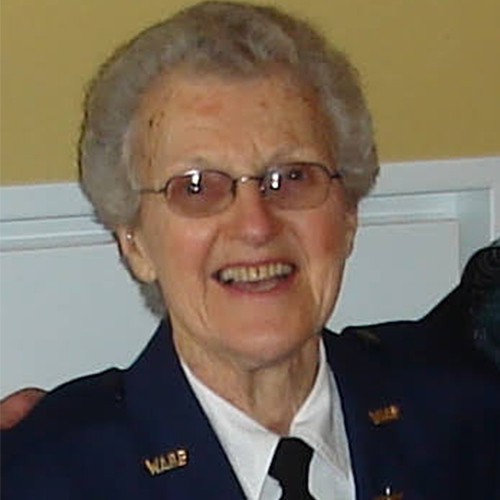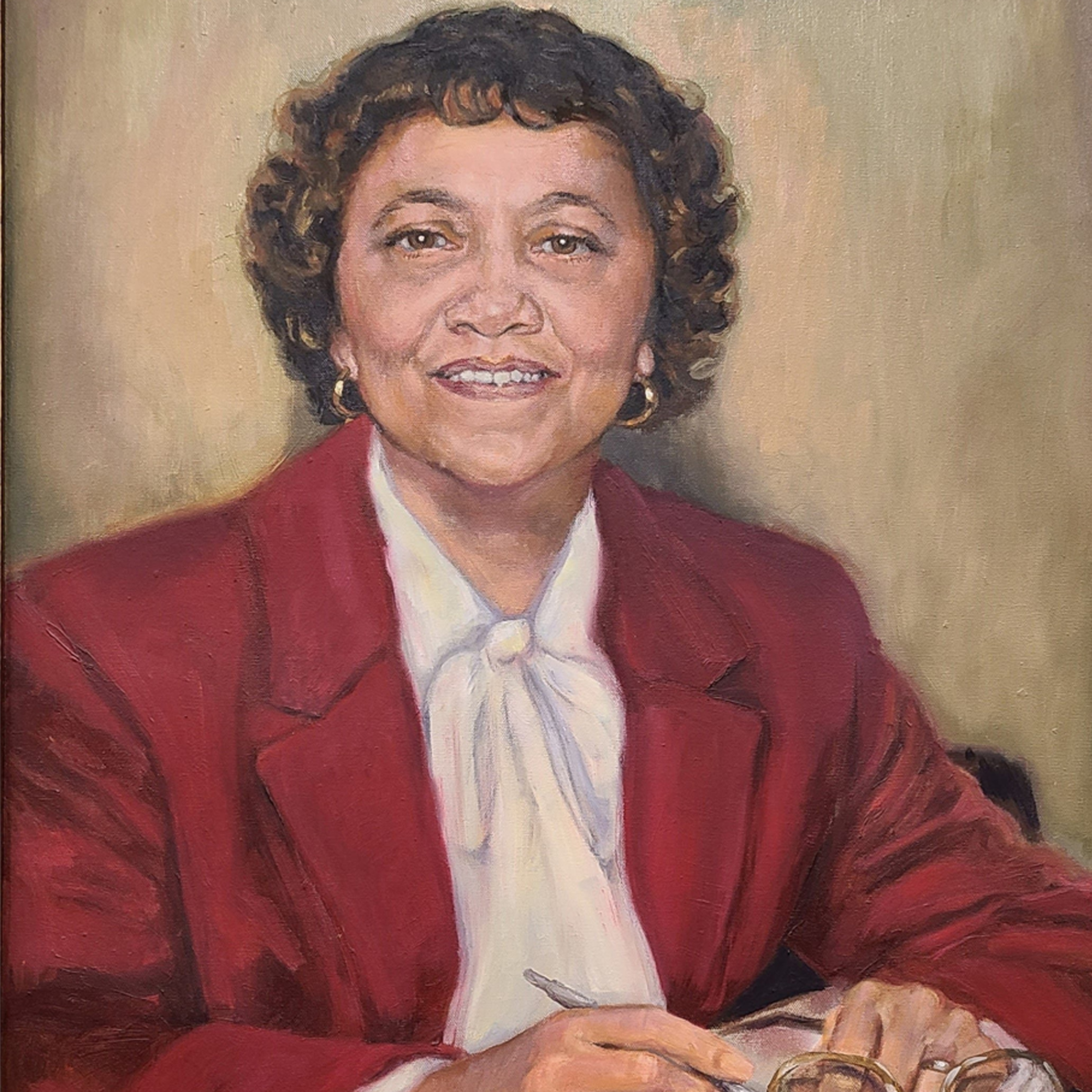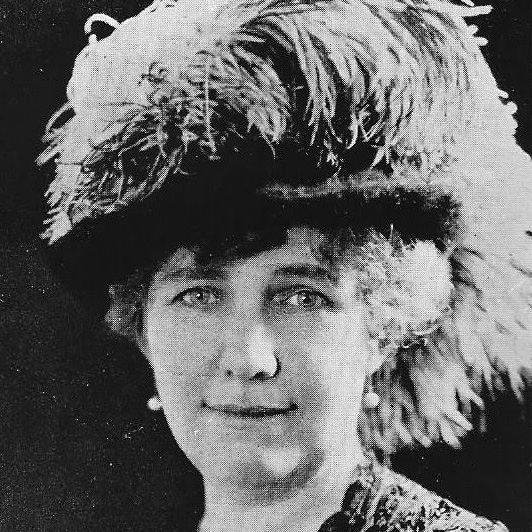A World War II Women Airforce Service Pilot (WASP), Lillian Lorraine Yonally (1922-2021) grew up in New Bedford, where she sailed the ocean before taking to the skies. Out of 25,000 WASP applicants, Lillian was one of 1,074 to graduate and one of only 20 to fly the Mitchell B-25 medium bomber. Lillian flew tow target operations over the Mojave Desert, where ground troops practiced firing live ammunition at fabric sleeves behind her plane.
A World War II Women Airforce Service Pilot (WASP), Lillian Lorraine Yonally (1922-2021) grew up in New Bedford, where she sailed the ocean before taking to the skies. Out of 25,000 WASP applicants, Lillian was one of 1,074 to graduate and one of only 20 to fly the Mitchell B-25 medium bomber. Lillian flew tow target operations over the Mojave Desert, where ground troops practiced firing live ammunition at fabric sleeves behind her plane.
Born in Lynn, Massachusetts on May 5, 1922, Lillian grew up on Pleasant Street in New Bedford with her father and grandparents in circumstances that were less than idyllic. Her father Jack Lorraine and his well-known family owned and operated Lorraine’s Coffee Shop on Purchase Street. After her parents divorced when she was three, the family was divided. Her father was given custody of Lillian; her Canadian mother, Dorothy Margurite de Gruchy, was given custody of younger sister Dorothy. Lillian’s mother returned to Canada with Dorothy, while Lillian remained in New Bedford, where she enjoyed swimming, fishing and sailing. She visited her mother and sister in Halifax, Nova Scotia during summers.
When Lillian was 14, her father remarried, and family circumstances became even more difficult. In order to placate her stepmother, Lillian was sent to Lincoln School, an all-girls Quaker boarding school in Providence, Rhode Island for high school, with the understanding that she would not return home. Before she left for school, she would join her aunt and uncle on flights that they piloted to New York. When her father asked her what she would like before moving to Providence, Lillian answered, “I want flying lessons.” At age 15, Lillian learned how to fly on Piper Cubs at a small airport in Rochester, Massachusetts. In a 2010 Times Union interview, Lillian said, “Flying is the most wonderful feeling. It’s that combination of freedom, control and ability. It’s beautiful in every way.” Flying brought a sense of control to an otherwise uncontrollable family situation.
After graduating from Lincoln School, in keeping with the plan that she not return home, Lillian was sent to Katharine Gibbs School, a secretarial school in New York City, with the hope that she would eventually find a job to support herself. While at Katharine Gibbs, she took flying lessons on Long Island at Roosevelt Field, where she earned her private pilot license on September 7, 1941, three months before the Japanese attack on Pearl Harbor. Soon after graduating from Katharine Gibbs, Lillian was hired by Grumman Aircraft Engineering Corporation in Bethpage, Long Island, first as an executive secretary and then as an air traffic control tower operator. With her pilot license and knowledge from study of her flying manual during commutes to work, Lillian became one of the first women air traffic controllers in that era.
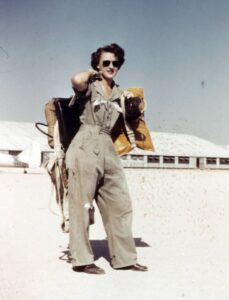
While at Grumman, before the United States involvement in World War II, Lillian continued to fly. On the morning of December 7, 1941, when Japan attacked U.S. military and naval forces in Hawaii, the U.S. suffered a devastating defeat that included 3,435 casualties. The day after the attack, President Roosevelt asked Congress for a declaration of war against Japan. Three days later, the U.S. became fully involved in World War II, and a massive mobilization followed. With millions of men and women serving in the military overseas, civilians remaining stateside were committed to supporting the war effort. Within a year, two of the most skilled women aviators of the 20th century, Jacqueline Cochran and Nancy Love, would lead the effort to utilize women pilots during wartime. In 1942, to free up male pilots for overseas combat by recruiting women pilots for domestic operations, U.S. Army Air Forces General Henry “Hap” Arnold initiated two programs: the Women’s Flying Training Detachment (WFTD) headed by Jacqueline Cochran and the Women’s Auxiliary Ferrying Squadron (WAFS) headed by Nancy Love. On August 5, 1943, Cochran’s WFTD merged with Love’s WAFS to form the Women Airforce Service Pilots (WASP) with Cochran as director and Love in charge of the WAFS unit. To be considered for the WASP, a woman had to hold a civilian pilot’s license, have a minimum of 35 flight hours, and pass an Army Air Corps physical. From the thousands of WASP applicants, Lillian was one of 1,879 accepted, and one of only 1,074 to successfully complete the rigorous training.
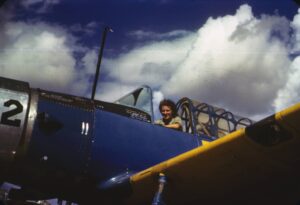
In interviews, Lillian discussed initial training at Avenger Field in Sweetwater, Texas, “We had both alternating flight line and ground school. We would have flying in the morning and ground schooling in the afternoon. And then the following week we would reverse it. . . . Well, we did a lot of things I had not done before but they were explained to you and there was no problem with doing them.” WASP training included flying the PT19-A, the BT, the AT-6, and the UC-78. Ground school covered instrumentation, map navigation, signals, engines, weather and cross-country information. The women were then tested on flying different types of military planes. “I’ve never been as scared as I was to take that exam,” admitted Lillian. “You had to do a spin or a double spin and come out at the same heading,” she explained. After graduation in WASP Class 43-W-7, the seventh class of 1943, Lillian could fly day or night in B-13s and B-15s. She then was one of the first 20 women chosen to be trained on the Mitchell B-25 (Boeing made, mid-range bomber), at Mather Field in Sacramento, California. Lillian added, “And except for one girl who found a guy she wanted to marry and quit . . . I can’t imagine picking a guy over an airplane! I mean those B-25s were beautiful, I loved them. I stayed until I graduated with the class.” The Mitchell B-25 would become her favorite airplane.
After graduating from Mather in 1944, Lillian was one of nine pilots assigned to March Field in Riverside, California, where she flew tow targets over the Mojave Desert.
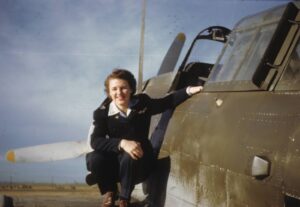
In tow target operations, ground troops would fire live ammunition at fabric sleeves that trailed behind her plane for artillery practice. A tow reel operator would fly in the stern of the airplane and let the sleeve out, which required the pilot to full throttle up really fast. Lillian explained, “. . . we would tow the target for four hours, two two-hour shifts for the guys down below. They were firing live ammunition at the sleeve. Each group, or battery would dip their bullets in a different primary color. . . . When they hit the sleeve, which was made of clear nylon material, you could read who had made hits and who did not.” Lillian spent much of her time towing targets, a dangerous assignment where some WASPs had their toes and feet shot. On the day her tow reel was cut by a live bullet, she went down to check out the guns and met the man in charge of the firing line, James Marvin Yonally, who asked her out and would become her husband.
From 1943 to 1944, the duration of the groundbreaking WASP program, over 1,000 women flew over 60 million miles performing such duties as towing aerial targets, ferrying aircraft from factories to military bases, testing planes for safety, and flying searchlight tracking missions. Lillian logged over 1,000 hours during her WASP service. Using a contraband camera given to her by her father, she took color photographs of her friends, the aircraft and her instructors. During their brief but courageous service, 38 WASPs died in service to their country. As civilians, no flags were draped over their caskets. The WASP program was suddenly disbanded on December 20, 1944, after male civilian pilots lobbied for their jobs, but only after women proved they could fly. More than three decades later, after Lillian and other World War II fly girls advocated for themselves, the WASP were granted retroactive military status in 1977 and were awarded the Congressional Gold Medal in 2010.
After her WASP service ended, Lillian worked for Sperry Gyroscope in Mineola, NY testing venturi tubes, an instrument used in aviation. Along with three other pilots, she owned an airplane that she would fly to New Bedford every fourth weekend for family visits. In 1946, Lillian married Jim Yonally after he returned from Korea. The couple would have six children, she gave up flying and stayed home to raise their family. After Jim died, Lillian went back to work, sometimes holding three jobs to make ends meet. Once the children were grown, Lillian began to open up about her experiences flying and joined efforts to have the WASP be recognized for their service. She traveled the country to speak about the WASP role in the war effort and attended WASP reunions. Daughter Lynn Yonally, who accompanied her mother at many events, stated, “This was a group of women that supported each other so much through the training and through everything else. And when they came together again, they’re the most humble group of women, fierce women that I’ve ever, ever come in contact with. I was fortunate. I probably went to 10 or 15 reunions. … It’s a group of women that just hold each other up.”
Upon her passing at age 99 on December 31, 2021, Lillian left a legacy of resiliency and determination, especially for young girls and women.
Ann O’Leary, Emily Bourne Research Fellow
Information from
-
Cochrane, Dorothy, and P. Ramirez. “Women Take Wing in Wartime.” National Air and Space Museum, 28 Oct. 2021, https://airandspace.si.edu/stories/editorial/women-take-wing-wartime.
-
Crowe, Kenneth C. “Cohoes Woman Was a WWII Aviator Pioneer.” Times Union, 8 Jan. 2022, https://www.timesunion.com/news/article/Cohoes-woman-was-a-WWII-aviator-pioneer-16758324.php.
-
Glenn, Heidi. “A Contraband Camera: Photos of World War II WASP.” NPR, 10 Mar. 2010, https://www.npr.org/sections/pictureshow/2010/03/a_contraband_camera_photos_of.html.
-
Johnson, Caroline. “Women with Wings: The 75-Year-Legacy of the WASP.” National Air and Space Museum, 5 Aug. 2018, https://airandspace.si.edu/stories/editorial/women-wings-75-year-legacy-wasp.
-
Lauria-Blum, Julia. “Lillian Yonally – A Life in Color.” Metropolitan Airport News, 11 Jan. 2022, https://metroairportnews.com/lillian-yonally-a-life-in-color/.
-
“Lillian Lorraine Yonally.” Times Union, 6 Jan. 2022.
-
Yonally, Lillian Lorraine. Interview by Wayne Clarke. New York State Military Museum, 27 Aug. 2009. https://museum.dmna.ny.gov/application/files/3215/9464/6639/Yonally_Lillian_Lorraine.pdf.
-
Yonally, Lynn. Interview by Katie Hafner. “Lillian Yonally – World War II WASP – ‘Why Choose a Man Over a Plane?’” Our Mothers Ourselves, season 1, episode 10, 12 July 2020. https://www.buzzsprout.com/1064365/4531919.
